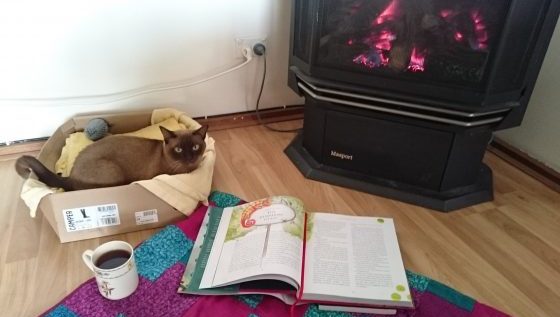It’s been over a week since I last posted. Between my major projects (Foggy Frog book and AAEE 2016 Conference) and the weather here it’s been difficult to find time to write here.
Yesterday, just as I was about to write my post, the power went out at home. It was out most the day so instead of working (everything I’ve got to do at the moment is online) I spent the day reading Harry Potter and playing with the cats.
It was interesting working out the best ways to stay warm when the heater didn’t have it’s fan (it was warm right in front of it but the heat didn’t get very far) and I didn’t have electricity to make the gas hot water work for a bath or the kettle work for tea.
In the end, I used the stove (gas and I could light it with a match) to boil water for tea and just sat as close as I could to the fire most the day with the cats for company.
Anyway, on to what I was planning to talk about yesterday…
Testosterone – an Update
It’s been over 3 months since I started on Testosterone treatment for pain and energy management.

The first few months I didn’t really notice much difference. There was a good reason for that though as, although we started at the usual dose for women and doubled it at the end of each month, I didn’t seem to be absorbing much of it. The free levels in my blood only went up by 0.3 over the first two months from 0.4 to 0.7 (normal range for women is 1.5 to 8 – I don’t remember what the measurement units are sorry)!

However, once we doubled the dose again, for a total of 1 mL daily, my free testosterone levels in my blood have finally reached low-mid normal range (around 2). I’m beginning to notice some changes in my base levels of pain and a decrease in the number and intensity of the crashes I have. Nothing really worth claiming as a significant improvement yet, but even the change in crash frequency has allowed me to get a lot more done recently.
Foggy Frog and the Pain Gang Book Launch
We’ve set a date for the official book launch! There will be a live event on Saturday 24 September 2016 at Burnside Library, followed by a series of online events during Invisible Illness Awareness Week (September 26 – October 2 2016). Register for the live event here and stay tuned for more details of the online events.
If you have your own blog or podcast and would be interested in being a part of the Invisible Illness Awareness Week events let me know in the comments or contact me below.















